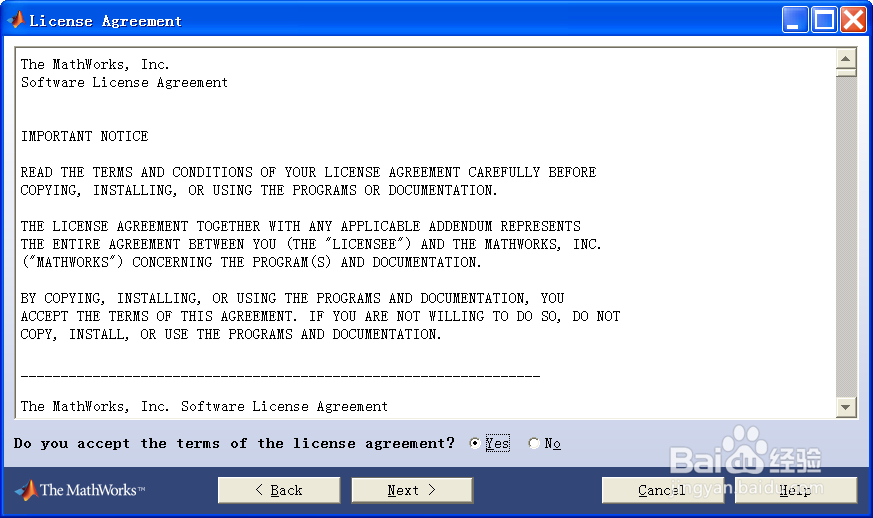

- #MATLAB 2018B VS 2018A CRACKED#
- #MATLAB 2018B VS 2018A RAR#
- #MATLAB 2018B VS 2018A LICENSE#
- #MATLAB 2018B VS 2018A DOWNLOAD#
In this step, select “I have my license file installation key” and Enter installation key: 09806-07443-53955-64350-21751-41297Then click Nextĥ.

Choose “Yes” to accept the license agreement, and then click on “Next step”Ĥ. In the Installation Wizard, select “Install Key with File” and click Next.ģ.
#MATLAB 2018B VS 2018A RAR#
* rar to decompress, then load the R2018b_win64.iso file after decompression (friends without the relevant mirror software can choose to right-click to decompress the R2018b_win64.iso file), find setup.exe in the pop-up window, right-click to select After downloading, decompress the MATLAB r2018b program, select any r2018b_win64.
#MATLAB 2018B VS 2018A DOWNLOAD#
Download the software installation package of MATLAB r2018b and Crack to the local Baidu Disk provided by this website.īecause of the document tutorial, I recommend you to use the “Baidu cloud disk VIP cracking speed-limited final version (green installation free) or Baidu cloud stewardship speed-limited version (installation required)” for high-speed download.Ģ.
#MATLAB 2018B VS 2018A CRACKED#
= pol2cart( a, ones(1,n) ) = pol2cart( b, 0.Software Name: MATLAB R2018b Win64 Bit Chinese Cracked Edition (with License File + Installation Key + Activation Method) Software size: 12.0GB Update time: MATLAB r2018b Cracked Edition Installation Activation Graphics and Text Courseġ. % Set up some demo values for plotting around a circleĭt = 0.05 a = 0:dt:2*pi+(dt*nFade) n = numel(a) b = a.*4 Here is the code, see comments for details: % "Buffer" size, number of historic lines to keep, and governs the Recolour the lines, fading to white, rather than changing transparency.Create a fixed n lines and update their position, rather than creating a growing number of lines.This answer offers a different approach for line drawing which has no compatibility issues (these two 'features' could be implemented independently): My 1st answer uses the undocumented (and as of 2018b, depreciated) transparency option for lines. I'm adding a 2nd answer to clearly separate two completely different approaches. I included the deletion of barely visible lines, as suggested by (my own, perhaps less elegant implementation)Īnd here a demonstration of a quick release mechanism: % exclude deleted line from loop, so edgealpha is not P(j).EdgeAlpha = p(j).EdgeAlpha*alpha_fraction % Update the alpha to be a fraction of the previous alpha value % when it still exists (delete from that index) % loop over all the previous created lines up till this iteration % only do when first line is already plotted % set alpha of line to fraction of previous alpha value P(i) = patchline(x,y, 'linewidth', 1, 'edgecolor', 'k') % create line with transparency using patchline to keep track of which lines are already deleted % looping variable to prevent deleting and calling already deleted lines Since the fourth color parameter as alpha value is no longer supported in Matlab 2018a (and apparently was never supposed to as Cris Luengo pointed out), here a solution that works in Matlab 2018a using the patchline function from the file exchange (credits to Brett Shoelson). Solution for Matlab 2018a or later (or earlier, later than 2012a at least) Got enough upvotes to motivate making a slightly more fun demo.

Apparently the 4th Color value 'feature' has been depreciated in R2018b (not sure it was ever officially documented).I generated the actual gif using imwrite in case that's of interest too.This way your figure won't have loads of transparent remnants. You can delete transparent lines by adding something like if lines(ii).Color(4) < 0.01 You may want to do some plot/memory management if you've got many lines. % Set the 4th Color attribute value (the alpha) as a percentage % will already by transparent with this method! % Note that we only need to go back as far as ii-nFade, earlier lines % "Buffer" size, number of historic lines to keep, and governs the % Array of graphics objects to store the lines. Here is the code, see my comments for details: % Set up some demo values for plotting around a circleį = figure(1) clf xlim() ylim() Here's a demo resulting gif, where I faded out 10% of the transparency each frame, so only the most recent 10 lines are visible. You can do this by modifying the 4th Color attribute of past lines.


 0 kommentar(er)
0 kommentar(er)
